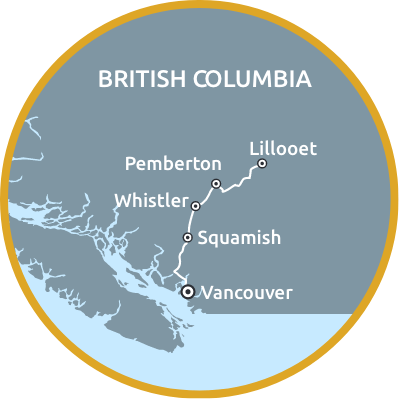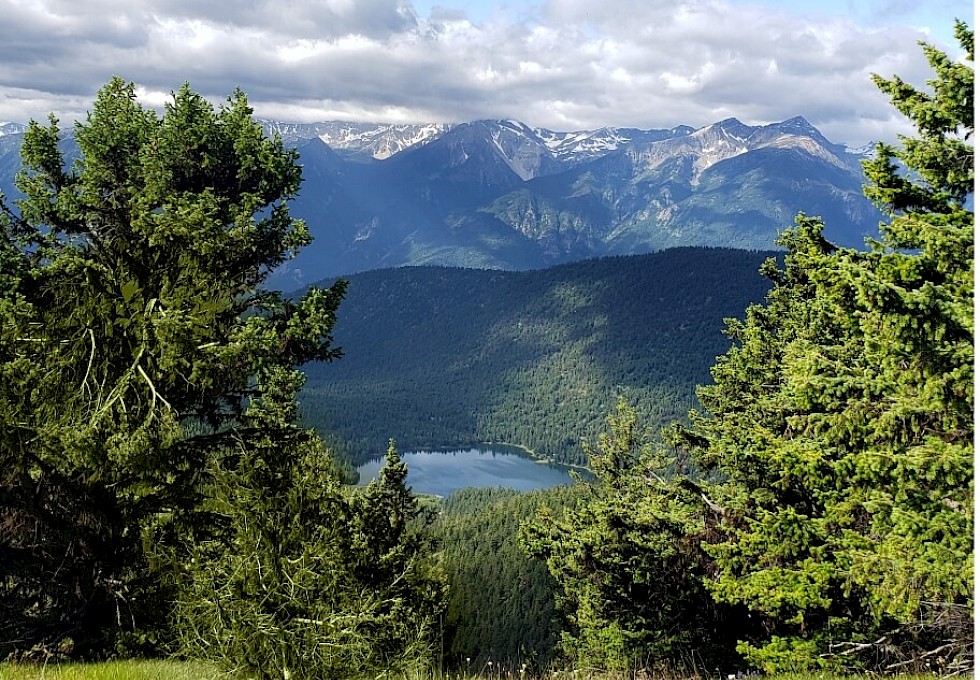
With respect to our Bralorne Project, Talisker identifies the Squamish Lillooet Regional District (SLRD) as our local area. We consider the area of our greenfields exploration in southeastern BC to be our regional area. We track and report our impact on local communities, the region of our greenfields exploration and the province of BC as a whole.

"We are all involved in maintaining the world we live in. Everything we do has an impact on the environment, from turning on a light switch, driving a car to watching television. As responsible corporate citizens involved in exploration for extractive industries, our aim is to work hard to reduce the footprint of this impact through a concerted effort at all levels of our organisation, the contractors we use, the products we buy, the way we interact with our communities.
Talisker’s environmental program is tightly integrated with the corporate culture we are developing. Our Program is pervasive throughout all levels of the organization and is upheld by each and every employee and contractor. We are striving for an individual conscious choice to make a difference."
Talisker's 4 R's
- Do we need this product?
- Is there a reusable / recyclable / compostable / biodegradable alternative?
- Where was this product made, can I source something local and reduce the carbon footprint?
- Do I know what chemicals are in this product?
- Is there an alternative with less packaging or safer ingredients?
Talisker's 4 R's
- Can we use less of this product?
- Can I buy a smaller amount to reduce waste?
- What should I do with the waste after I am finished?
- Can I use less energy & water?
Talisker's 4 R's
- Can we reuse this item?
- Can someone else re-use this product when I am finished? Can someone else use what I don’t?
- Can we donate this product for future use after we have finished with it?
Talisker's 4 R's
- Can this product be recycled?
- What needs to be done to this product to be recycled (cleaned/sorted)?
- Do I know where to recycle?
- What is the process /energy cost to recycle?
Talisker Initiatives, Based on the 4 R's
Although accounting for only 1% of global CO2 emissions, paper production can contribute to the release of toxic dioxins and volatile sulphur compounds into the environment. Implementation of a digital office can help to reduce these impacts.
- Paper free office
- Digital field data collection & mapping
- Digital Document Management System
- Use of recycled paper and cardboard where applicable
- Requesting digital invoicing and statements
Invasive species are plants and animals that are not native to the habitat they are currently living in. Many invasives have the ability to overpower native species, quickly becoming dominant, to the detriment of less aggressive local organisms.
Some examples in British Columbia include Baby’s Breath, English holly, the Asian Long Horned Beetle & Beech bark disease.
We are training our staff to recognize invasive species and where possible to contain and remove them. Where we cannot remove the invasive, we will contact local organisations who specialize in invasive species. We are also diligent to prevent the spread of these species by our exploration activities.
Talisker is taking the following measures when an invasive species is identified:
- Record the location
- Document and photograph object(s)
- When possible, aid in the removal of invasive plants following proper disposal procedures
- Prevent transfer to other locations by checking and cleaning boots, tires and vehicle undercarriages
- Notify local organizations where large infestations are identified
Talisker Resources is committed to creating a pervasive environmental culture within our organization. Constant reinforcement of environmentally sustainable principles can heighten awareness and increase our positive impact. Integrated with daily safety meetings, the Environmental Toolbox provides an informal platform for communication and idea sharing between team members.
Morning discussion topics include:
- Environmental improvement
- Wildlife safety and procedures
- See, acknowledge, act philosophy
- Topical issues related to activities
- Ways to increase waste reduction
- Impact minimization
- Incident reporting & analysis
- Mitigation
- Thought provocation
- Continual improvement
- Create and foster culture of environmental awareness
- Identification of environmental damage prior to initiates activities
- 5 r’s – Rethink, Reduce, Reuse, Recycle, Revisit
Talisker will continue to improve our processes and will continually ask if we can do a better job when it comes to the environment.
Even though designated garbage disposable units, recycling containers and government landfills are at our fingertips, littering is still a major concern in our society. During the course of their daily activities our field crews walk creeks and roads which are often dumping grounds for household litter and equipment. By simply collecting litter when they see it, our geologists are able to make an immediate impact, potentially stop the accumulation of garbage and hazardous materials into the environment.
Talisker Resources provides field crews with the tools required to collect litter and training to identify potentially hazardous materials for later removal by the relevant authorities. Back at base, litter is sorted with recyclable materials separated and sent to recycling depots and non-recyclables deposited in the appropriate land fill.
- Cleanup of creeks traversed
- Cleanup of roadways and parking areas
- Recycle and correct landfill deposition of material collected
- Identification & reporting of hazardous waste & Illegal dumps
- Litter cleanup of old project sites
- Zero tolerance for littering
Although erosion is a natural process it can be greatly accelerated by man-made activities resulting in changes to natural water flow, loss of topsoil and increased sedimentation. Through their daily activities to remote areas our field crews can identify areas where erosion has been accelerated and where possible implement simple containment measures to slow the process while recording the location for later reporting.
- Training to distinguish man-made from natural erosion
- Photograph erosion and record size of area affected and location
- Identify risk to ground stability and mass flow
- Avoid vehicle borne damage to existing sites
- Where possible implement simple mitigation measures with local materials
